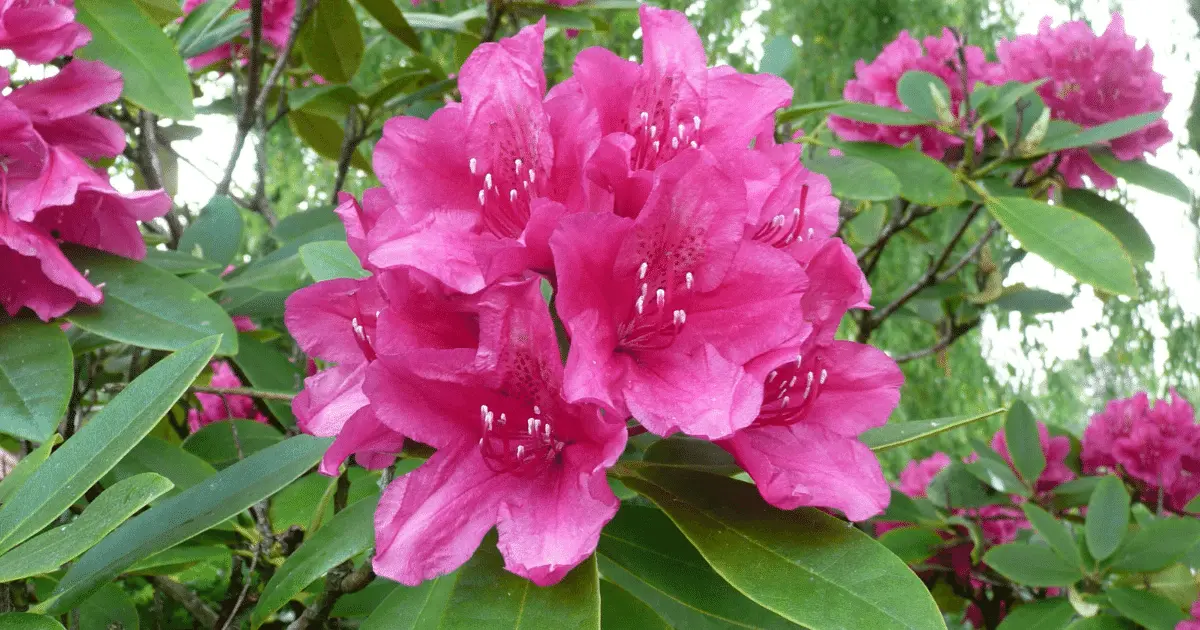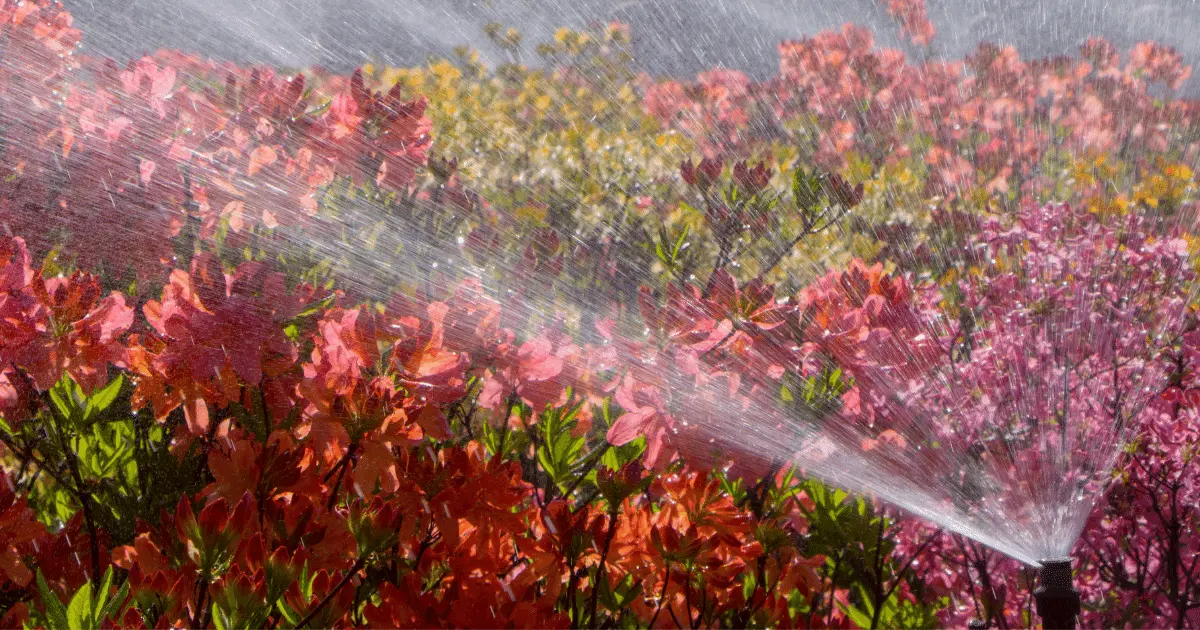Are you worried that your colorful and prominent azaleas will suffer and die? If this is the case, you need to relax your nerves.
A few years ago, I experienced the same issue, but fortunately, I was able to save my azalea plant. Let’s face it, the aesthetic beauty of azaleas makes one want to add more, and it is annoying when they die instead of animating your space.
So here are some helpful tips I used to save my azalea plant. You can use the same strategy to bring your indoor azaleas back to life.
The list below contains the most common reasons your Azalea may be suffering and how to help your plant recover. Want to know more? Let’s begin!
A Bit About Azaleas

Azaleas are spring-blooming shrubs that come in a wide range of colors, but their vivid pink and white flowers are their most well-known colors. Azalea shrubs are very adaptable and simple to grow. They are indigenous to Asia and the Appalachian Mountains near the North American east coast.
Azaleas can grow low to the ground or as high as 25 feet and come in various sizes. They are healthy both inside and outside.
As a result, plant care is dependent on location. As long as it doesn’t get too cold or there is shade in a warm climate, the temperature doesn’t really matter. Because the blooms are poisonous, keeping the plants out of the reach of children and pets is vital.
Is The Azalea Still Alive? Look For Life

Don’t assume an azalea is dead if it isn’t looking its best and is losing flowers or leaves. Check the stems for green to see if there is any sign of life. Gently scrape a stem with your fingernail. The Azalea is still alive if there is green where the stem has been scraped.
If you don’t find any green on the stem after the first scrape, scrape every 2 inches (5 cm) down the branch until you do.
When you do locate green, you must remove anything above the green stem area. The Azalea will produce new stems as a result of the pruning. Hopefully, it will come back to life if the root problem is identified and treated.
As soon as this year’s blooming is over, azaleas begin to set their buds for the following season. So, the plant might not bloom next year, depending on when you prune them. However, if the plant is saved and develops again, you can continue to enjoy the azalea blossoms for many more years.
What Causes Azalea Plants to Die and How to Prevent It?
Because of the constant temperature fluctuations, humidity issues, and water requirements, growing azaleas can be more difficult. Azaleas need consistent care, and novice gardeners often struggle with them.
As a result, growing azaleas can be very difficult. Your love for Azalea, however, triumphs over all of these difficulties. Azaleas only require a little maintenance; if they are consistently neglected, a problem might develop.
Here are some reasons why azalea plants die and remedies you can use to give your Azalea a second chance.
Improper Watering

The roots of azaleas are very shallow. Because of this, the quantity of water the plant gets is crucial. The roots can quickly dry out or become waterlogged depending on your watering schedule. Watering can be detrimental to newly planted Azaleas, whether too much or too little. Planting shrubs in windy areas may also cause them to dry out more quickly. Your azaleas will retain moisture better if you mulch the area around their bases.
How to Fix
Step up the watering. You should give the shrub more water if the azalea leaves are drooping. Every week, azaleas require about one inch of water. Installing a rain gauge and checking it once a week will help determine the amount of water your plants receive. If your Azalea is scorched, water it slowly and thoroughly to ensure that a high amount of water reaches the roots.
Stop Watering. Your azalea plant has been overwatered if its roots appear mushy and soft. Before you start watering your plants again, give them a break and let the soil around the roots dry out a little.
Too Much Sun
Some azaleas tolerate full sun, but most enjoy the partial shade. Without a break from the sun, your azalea plants will grow more slowly, and the flowers will only bloom for a short time. Your leaves may start to curl in on themselves and change color to brown or yellow. Additionally, drought or excessive heat stress may cause more pest or disease infestations.
How to Fix
Transplant. If you think they are receiving too much sun, moving your azaleas is your best option. Find a place in your garden where the Azalea can get some shade. When your plant receives more shade, you’ll probably notice that it recovers nicely and retains moisture better.
Too much fertilizer
Azaleas require a basic fertilizer in summer or early spring. If the tips of your azalea leaves have turned brown and have started to drop, you may have damaged your plant with excessive fertilizer. Azaleas should be fertilized with a 10-10-10 fertilizer in the spring or early summer.
Additionally, you can use a specialized fertilizer for plants that like acid. Fertilizing is optional, but regardless of your method, make sure to stop after July.
How to Fix
Less is more. Established azaleas don’t actually require much care. If your Azalea already has fertilizer burn, you should flush the fertilizer out as soon as possible. After your plant has received enough water, remove any leaves that exhibit burn symptoms. The Azalea might not recover for a few months. Putting mulch at the plant’s base will help keep moisture and safeguard the burned roots.
Poor Soil
Acidic soil is ideal for azaleas. Acidic soil has a pH of 5.5 to 6.0 or less. They will endure but not thrive in excessively alkaline or sweet soil. Azaleas plants thrive when planted in soil that drains well. A soil that drains well will be moist, but it will not become soggy or wet.
Azaleas prefer soil with good drainage because they are prone to root rot and dislike having “wet feet.” Azaleas with root rot will die from the roots up. Unfortunately, it might be too late to save your Azalea if it has root rot. However, you can stop it from happening.
How to Fix
Test the soil. Check your soil’s pH using a pH reader from a garden store or by having a soil test done.
Improve the soil. If your soil is too alkaline, add a soil acidifier, such as garden sulfur, to make it acidic. Pine needles can be used as mulch, which can also help to acidify the soil. Compost can be added to your soil to change its texture if it is too sandy or heavy. This will prevent water from drying out too quickly while allowing for greater water flow.
Wrong plant, wrong place
Most azalea varieties are hardy in zones 5-9. However, this depends on the particular variety you have. Reading the plant tag or writing down the variety so you can later look it up is the best way to determine what type you have.
How to Fix
Plant a new crop. The best thing to do if you find yourself in a situation where your environment is either too cold or too hot is to choose a new plant that is ideal for your planting zone.
Problems with Pests
Pests such as nematodes, caterpillars, lace bugs, leaf miners, scales, and whiteflies have been known to cause problems for azaleas. You might see signs of leaf-munching, or perhaps your leaves have suddenly turned yellow without any explanation. These are merely a few indications that azaleas have pests. Wherever there is insect damage, you will frequently see the insect.
How to Fix
Prevent. Many pest outbreaks are simple to manage if you maintain your plant’s health. This entails providing the plant with the necessary nutrients through high-quality soil or fertilizer and preventing stress by correctly watering it.
Physical Eradication. Plant tissue that is infected should always be removed. Whether it’s leaves chewed by leafminers or caterpillars nibbling on them. Some insects can be eliminated by hand or hose spray. This is a fantastic substitute for applying chemical treatments. Just knock them into a bucket of soapy water to get rid of the insects.
Treat: Treat as necessary, and read the label on any product you buy to ensure that you apply it at the proper time and amount. Popular azalea-treating products include:
- Horticultural oils, such as bonide, all seasons
- Bayer Advanced Tree & Shrub insect control
- Sevin shrub treatment
Diseases
Azaleas are susceptible to fungus diseases, which are widespread in all gardens. Water, such as that from irrigation or rainfall, can spread fungi that cause infections. A fungus may manifest as white mildew that covers the entire plant, galls that form on leaves or flower petals, red spots on the leaves, or the complete death of one or more branches on your Azalea.
How to Fix
Use a fungicide. Fungicides made of copper are effective against fungi. Read the label carefully for application instructions.
Clean up your garden and plants. Trim and get rid of any diseased plant matter. Clean your instruments thoroughly before pruning a new plant to prevent spreading the infection to other parts of your yard.
If possible, remove the diseased plant debris from your yard; however, under no circumstances should it be included in your compost, as this will enable the fungus to spread throughout your compost when it is later spread.
Flower Buds Not Opening. Azaleas are deprived of enough time for new, full development when they are clipped very late in the summer. As a result, it makes it harder for buds to form and open.
Additionally, infections, low temperatures, inadequate nutrition, and dryness may be hampered bud opening.
How to Fix
- Spraying water on the buds will encourage the growth of the shoots and roots. Once the flower begins to blossom, you should be careful not to repeat the process.
- Use phosphorus-rich fertilizer to promote floral bud emergence and increased hardiness.
Many of the problems that your Azalea may be experiencing are easily remedied by taking a closer look at your plant care regimen and making a minor alteration to what you’ve been doing. Azaleas are simple to care for, and their blooms are a delightful sight in the spring.
The most straightforward approach to ensure that your shrubs are robust, healthy, and the bloom is to place them in a location in your yard that meets all of their requirements. After that, they will expect very little from you.
